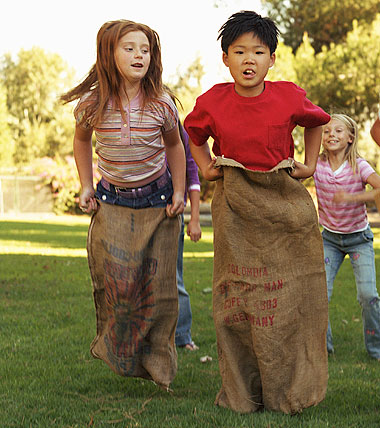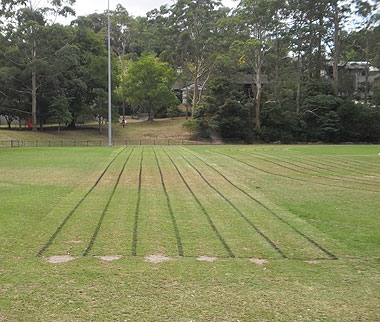Home > Patterns > Good teaching > Patterns in school activities > Repeating patterns in school activities > Sports day
Sports day
School events frequently contain patterns. Finding repeating and other patterns in an upcoming sports day could make a splendid whole-school project. Activities can be designed that are suitable for children of all ages.
Here are some questions students might explore.
- How often does your school hold a sports day? Do these dates form a repeating pattern?
- Does your school sports day have a sack race? If so, how does the movement of each competitor make a repeating pattern?
- Look at the running lanes for a 100 m race. How are they designed? How do they form a repeating pattern?
- Look at the running lanes for a 400 m race. What pattern do they form?
- Look at the best results for a race that is run by different year groups (e.g. times for a 50 m race in years 1–6). Do these numbers form a pattern? If so, describe the pattern.
- Find the number of points won by each house or year group. Do these numbers form a pattern? If so, describe the pattern.


